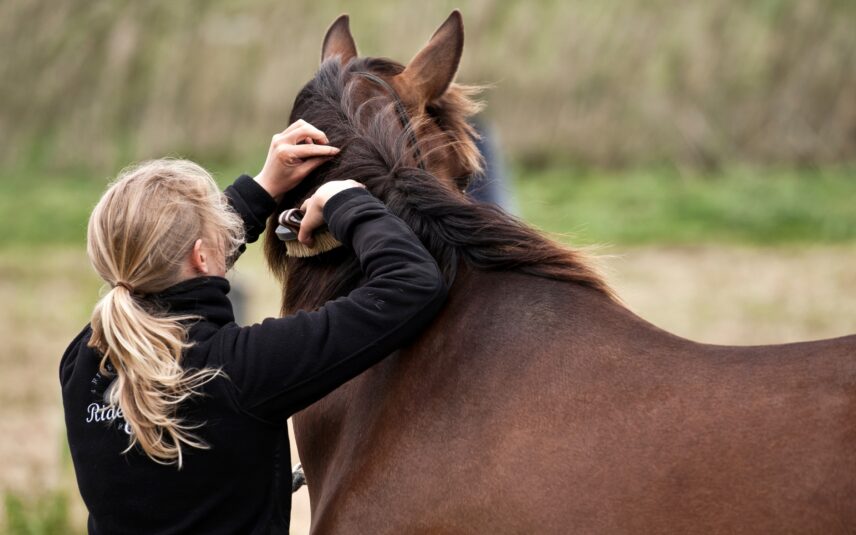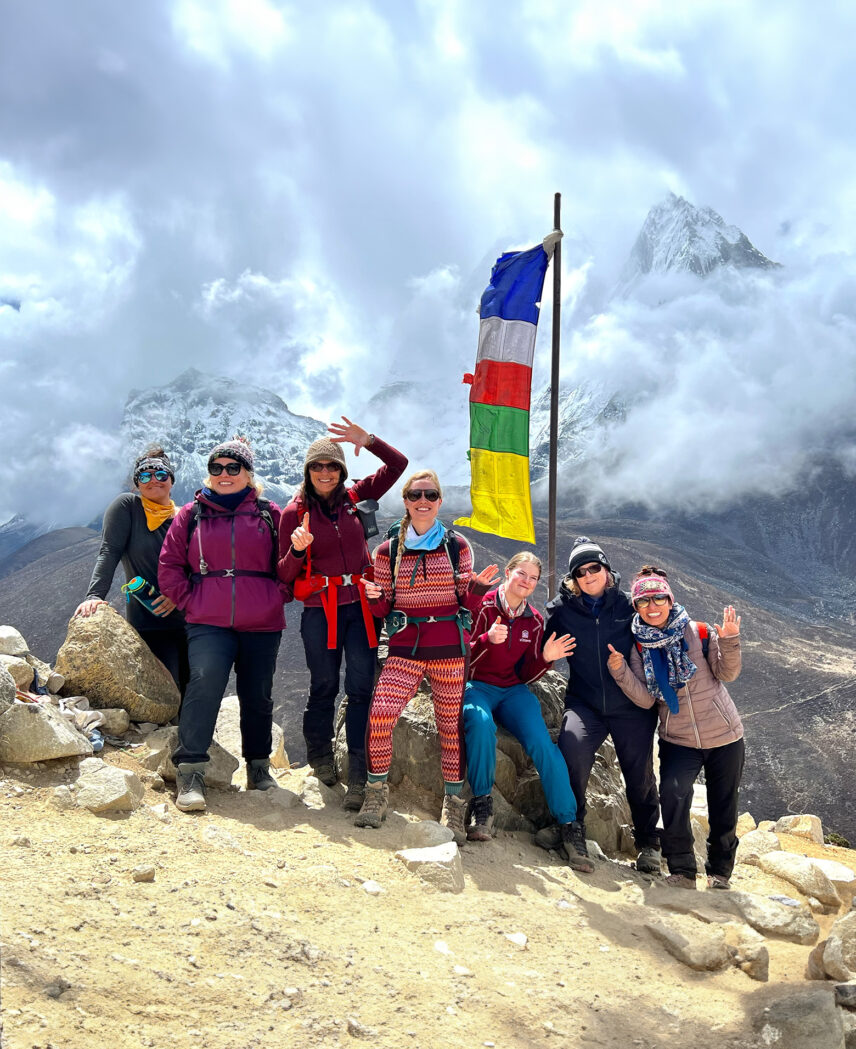The Azores are a group of nine Islands in the mid-Atlantic, that are entirely formed by volcanic activity. The archipelago is part of Portugal, though the islands are almost as close to North America as they are to Europe, with 1,400 km between Lisbon and the Azores, and 1,900 km to Newfoundland, Canada.
Portugal is the home of the famous Lusitano breed of horses, closely related to their Spanish cousin, the Andalusian. These horses are muscular, willing, steady and beautiful, originally bred for war, dressage and bullfighting. Their agile and elevated movements make them beautiful to watch as well as to ride.
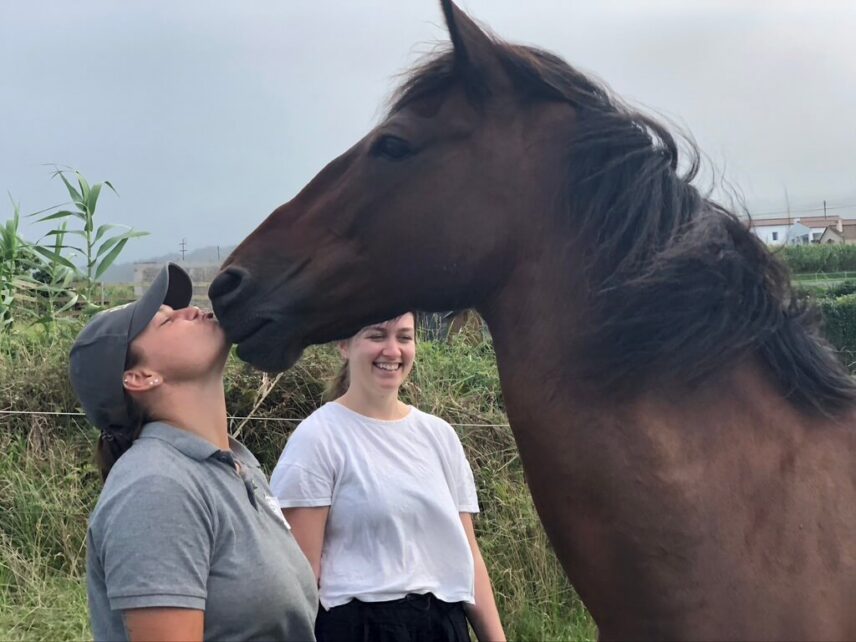
Patio Lanterns
At Patio, our Wild Women Expeditions base for the Azores Horses Whales and Volcanoes Tour on Faial Island, many of the horses that we ride are either Lusitano or a mix of Lusitano and other warm blood lines. These are mostly larger warm bloods with sweet personalities and smooth gaits. They are wonderful to ride, and just as sweet to snuggle in the field. Luckily, our accommodations are beside the paddock, so there’s lots of horse-love for those who can’t get enough.
Minimal riding instruction is given, so it’s best to consider this trip if you’re an advanced beginner (at least 6 months of regular riding and instruction, know how to tack a horse, are comfortable with walk/trot, and have tried canter) or more experienced riders, to get the most out of your experience.
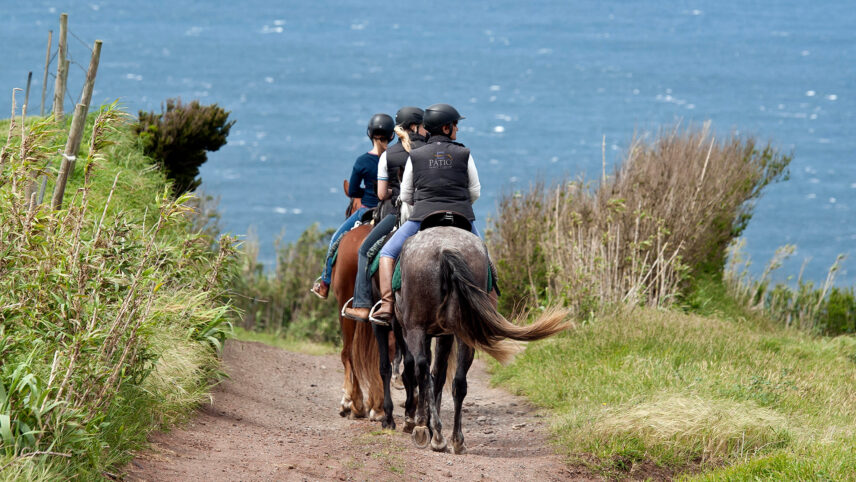
Trotting Around Faial
On this trip, we ride the same horse each day, though we only ride three out of the eight days. Aside from travel days, we also have whale watching and a self-guided tour of the town of Horta, a tour of the neighbouring island Pico with its incredible UNESCO vineyards and the highest mountain in the Azores (2,351 meters), and a challenging hiking around the rim of an extinct volcanic crater back on Faial.
Faial is small. You can drive around the whole island in an hour or so. Our riding adventures take us to three very different parts of the island where we are able to ride on dirt paths, gravel and paved roads, on sand dunes, and through forests and fields. We don’t do any beach riding on this trip for a couple of reasons. First, there isn’t much beach on Faial, and where there is, it can be tricky to access. Also, riding is forbidden on the beaches except in winter when there are no swimmers and tourists.
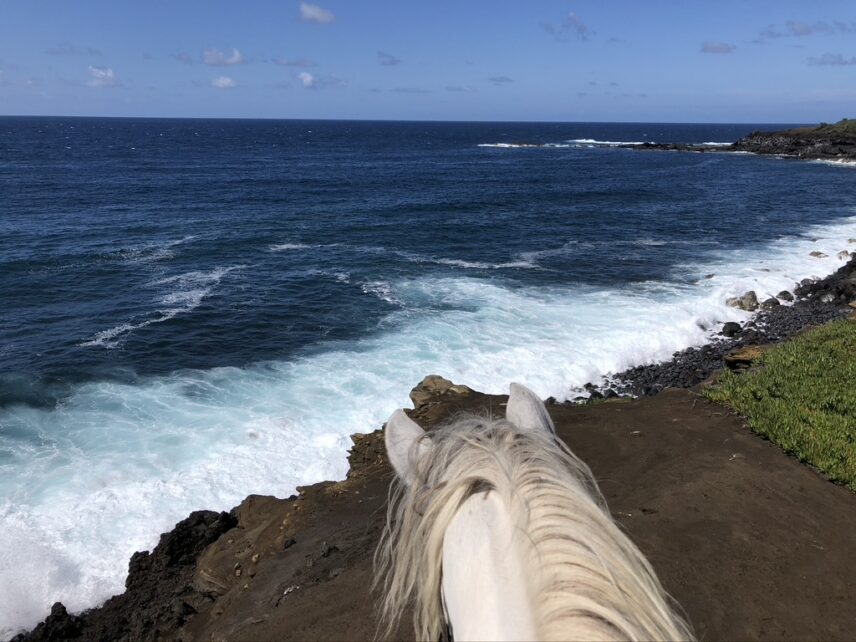
Each day, there is an opportunity to split the group for those who want to canter and those who’d prefer to trot. We start off together, and at a certain point, split away from one another to meet again at lunch, or if after lunch, at the end of the day.
The cantering paths are long wide stretches, with a slight uphill or flat. You can see around every bend, allowing you to canter for long stretches, getting into an ease and rhythm with your horse. With the longer stretches of cantering, both horse and rider can find their groove and settle in. There is time to enjoy the fresh air on your face, the power and heat of your horse, and the thrill of rushing past hills and trees and fields, with flashes of the brilliant blue hydrangeas that grow along every roadside on Faial.
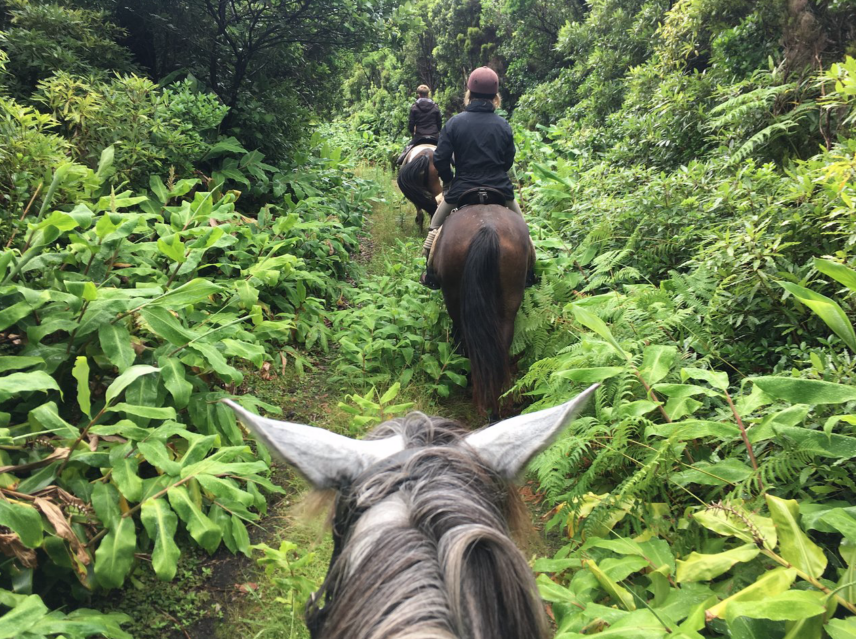
The Jungle Horse Camp
Two of our riding days are further afield, and in between, we leave the horses at our Jungle Horse Camp while we head by van to the seaside to enjoy a swim and a picnic, before retiring back in our cozy rooms at the lodge.
When we pick up our horses from the jungle horse camp in the morning, it has rained and the mud is thick. We pick our way through to the highest driest ground and groom our mostly grey horses as best we can. Making sure we have everything we need for the day, we mount our horses, using old tires as mounting blocks, and point ourselves back in the direction of the lodge.
At lunch, one of the cooks meets us at a picnic site and creates a makeshift hitching line for the horses, who stand and look over the deep lush valley to the sea as we eat a delicious local spread of fish, meat, bread, salad, sparkling water and fresh juice.
After lunch we make our way slowly back to the lodge. This is our last day or riding, and though it’s only been three days, we’ve all become very attached to our horses. We linger over untacking and grooming them, feeding them our leftover apples, dreaming of squashing them into suitcases, joking about staying on and getting a job in the Azores and buying them all, and finally turning them out in the field with their friends.
The magic of the Lusitano horses will linger like glitter in your heart. Don’t be surprised if you find yourself dreaming of those long energetic canters (or trots) through the unspoiled beauty of Faial, Azores, long after the trip has come to an end.
